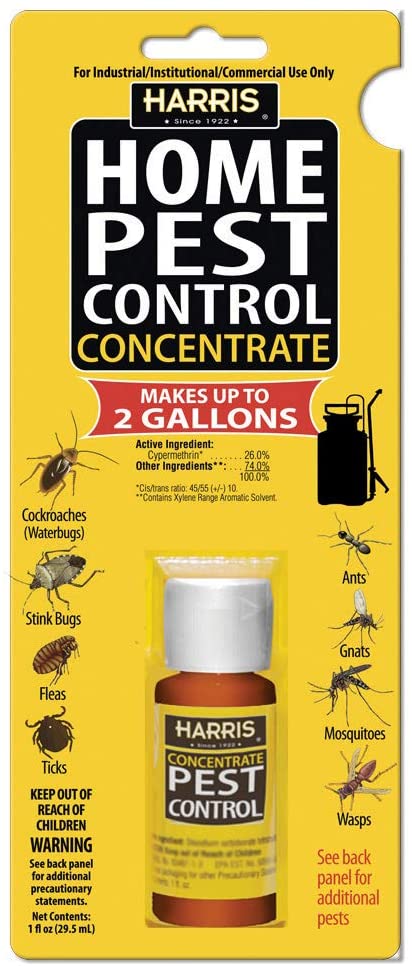Bed Pest Therapy Break Down: Contrasting Chemical Vs. Non-Chemical Solutions
In the world of bug control, specifically when managing the consistent concern of bed pests, the option in between chemical and non-chemical treatment remedies can be a critical one. Both techniques use distinctive benefits and disadvantages, influencing aspects such as performance, safety factors to consider, and total cost. By taking a look at the nuanced details of each approach, a more clear understanding of which path to seek in dealing with a bed insect infestation can be attained.
Performance of Chemical Treatments
Chemical treatments for bed insect infestations have been commonly identified for their fast and potent effectiveness in removing these insects. When taking into consideration the efficiency of chemical treatments, it is critical to recognize that they can provide a quick and extensive option to a bed bug problem.
Furthermore, chemical therapies have the advantage of using recurring results, indicating that they can proceed to remove bed pests also after the first application. This recurring action is especially beneficial in combating any prospective re-infestations. Furthermore, the rapid activity of chemical treatments can bring relief to individuals dealing with extreme bed pest invasions, allowing them to reclaim control of their home promptly.
Safety And Security Issues With Chemical Solutions
One crucial aspect that calls for mindful factor to consider when using chemical options for bed bug therapy is guaranteeing the safety and security of owners and the atmosphere. While chemical treatments can be reliable in getting rid of bed pests, they might pose threats if not taken care of correctly. Among the main security worry about chemical remedies is the potential damage they can trigger to human wellness. Direct exposure to certain chemicals used in bed insect treatments can cause respiratory concerns, skin inflammation, or other adverse responses, specifically in individuals with pre-existing conditions or sensitivities. Additionally, incorrect application or dosage of chemical pesticides can cause hazardous deposits lingering in the treated area, posing long-lasting health and wellness dangers to residents.
In addition, the ecological impact of chemical remedies is one more significant consideration. Some pesticides used in bed bug therapies may be unsafe to helpful pests, wild animals, and ecological communities if they leach into the dirt or water systems. It is crucial to utilize chemical therapies sensibly, following security standards, and considering less toxic options to reduce these dangers and ensure the effective and secure monitoring of bed pest infestations.
Benefits of Non-Chemical Approaches
Thinking about the potential safety problems and environmental influence linked with chemical services for bed pest treatment, checking out non-chemical strategies presents a promising alternative with several distinct advantages. Non-chemical treatments are eco pleasant, as they do not contribute to air or water air pollution, making them a sustainable selection for pest control.
Additionally, non-chemical services can be effective in targeting bed bugs, including hard-to-reach locations where chemical treatments may not permeate - A1 pest control services charlotte. Approaches such as warm treatment, vacuuming, heavy steam cleaning, and mattress coverings offer thorough elimination without the usage of damaging chemicals.
Limitations of Non-Chemical Treatments

Furthermore, non-chemical treatments frequently call for numerous applications to achieve successful removal. This can be time-consuming and read the article may not constantly ensure complete elimination of all bed bugs and their eggs, get redirected here especially in covert or hard-to-reach places.
Moreover, the success of non-chemical treatments heavily counts on appropriate application and thoroughness, which can be testing for people without specialist knowledge. Inadequate application of non-chemical methods may lead to insufficient removal, resulting in relentless invasions and the requirement for extra therapies.
Therefore, while non-chemical therapies have their advantages, it is important to acknowledge these constraints and consider them when figuring out one of the most efficient technique for taking care of bed insect infestations.
Price Comparison: Chemical Vs. Non-Chemical Options
Provided the restrictions associated with non-chemical treatments, a necessary element to evaluate in the context of bed insect administration is the cost comparison between chemical and non-chemical choices. In comparison, non-chemical treatments like heat therapy or vapor can be a lot more pricey, with costs ranging from $1,000 to $6,000 for a whole home. While the initial price of chemical treatments might seem reduced, several treatments might be required to completely remove the invasion, potentially increasing the overall price.
Conclusion

Considering the prospective security problems and ecological impact associated with chemical remedies for bed insect therapy, exploring non-chemical methods offers a promising choice with a number of distinct benefits.Provided the limitations connected with non-chemical treatments, an important element to evaluate in the context of bed bug administration is the expense contrast between chemical and non-chemical options. click site In contrast, non-chemical therapies like warm treatment or heavy steam can be much more pricey, with prices varying from $1,000 to $6,000 for an entire home. While the preliminary expense of chemical treatments may seem lower, numerous treatments may be called for to totally eradicate the invasion, potentially increasing the overall expense.In conclusion, when comparing chemical and non-chemical bed pest therapy alternatives, it is vital to think about efficiency, security, benefits, limitations, and cost.
Comments on “Reputable A1 Bed Bug Exterminator Charlotte - Do Away With Bed Bugs Quick”